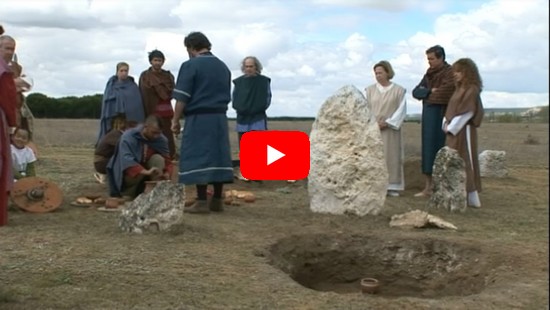
Federico Wattenberg Center for Vaccean Studies (University of Valladolid)
PINTIA VACCEA
Economic base of the Vaccean people
Farmers, herders, artisans and merchants
Archaeologists have uncovered a lot of information about these activities which explain the Vaccean economy. The livestock pens, for example, were divided for animals in order of importance: cows, sheep, goats, pigs, horses, chickens and rabbits. Sheep were very important, not only for food but for wool. This material, normally black, formed the base of the flourishing textile trade. The creation of wool garments and capes, which would later become so prized that they would be used to pay a war debt. Horses, before being used as meat, played an important tactical role. The Classical historians praised the Celtiberian cavalry, commenting on some Vaccean cities such as Pallantia and Intercatia.
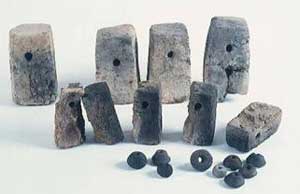
Spindles and weights
Extensive grain-based agriculture was the main supplier of the area's diet. The grain storage of some Vaccean settlements and the abundant written references are clear on the surpluses that characterized the Vaccean harvests. In the archaeological record, in layers of destruction caused by fire, it is common to find grain storage full of carbonized wheat, confirming what has been written.
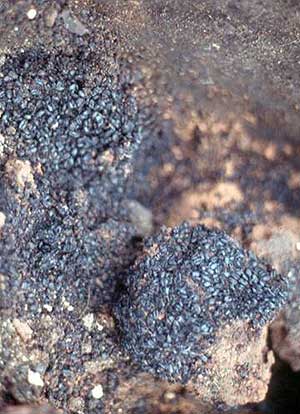
Carbonized wheat
Wine was likely produced at very least around the 2nd century B.C., according to data taken from Cauca, but wine drinking is recorded from the 4th century B.C. via cups uncovered from Las Ruedas cemetery at Pintia. Nevertheless, the agriculture and livestock sectors should not be considered the exclusive base of the Vaccean economy. The analysis of the artifacts in the archaeological record allow us to envision a high-level of craftwork and an intense network of commercial trading that would have extended outside the Vaccean boundaries, especially in the southern area of the modern provinces of Palencia, Burgos and Álava, where the Cantabrians, Autrigones, Turmogos and Berones lived.
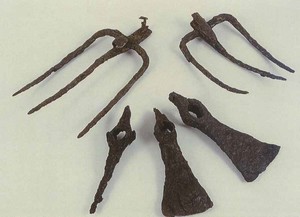
Farm tools found in a house
from the 1st century B.C. in Las Quintanas
One of the most striking gaps in this sedimentary territory of the central region of the Duero River was the absence of metallic veins, fruits of the work of metal smiths and jewelry makers. Nevertheless, within the Vaccean region we have found a splendid variety and quantity of metallic creations, some of which bear such interesting traits that they are enough to identify the artisan with a trademark style.
It is clear that the surplus of grain production was used to trade for a series of prime resources, among which include the granite used to make the traditional circular milling stone.
The vast styles of ceramics appeared testifies to the variety and strength of Vaccean pottery production. Hand-made, smooth or comb-decorated, a diverse variety of wheel-spun pottery either coarse, common, or thin and painted with geometric patterns were very popular and spread throughout the region. The excavation of specific artisan neighborhoods such as Carralaceña, linked to Pintia, located on the right bank of the Duero River, has allowed us to document several pottery kilns.
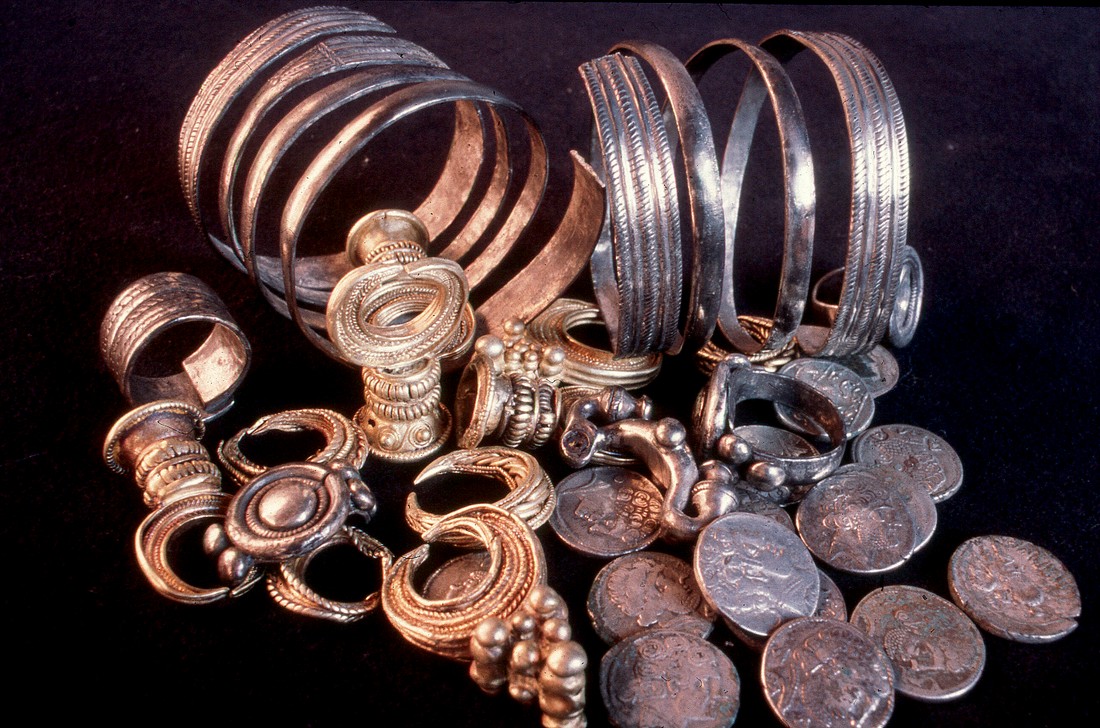
Treasure No. 2 of Pintia looted by poachers in Las Quintanas in 1984
Maybe you're interested...
